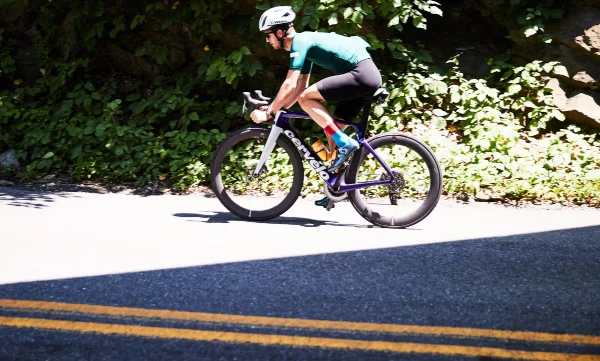 Question: I would really like to see advice for cycling on narrow, twisty roads. We do a lot of biking with a small group on roads in the Okanagan and are sometimes unsure what’s best and safest.
Question: I would really like to see advice for cycling on narrow, twisty roads. We do a lot of biking with a small group on roads in the Okanagan and are sometimes unsure what’s best and safest.
Case in point - when driving in Summerland on Prairie Valley Road from Cartwright Avenue to Morrow Avenue, the road is very narrow and curves to the right and no shoulder. On the other side of the road is a shoulder defined by a white line. Cars coming behind us can’t see us until they are on top of us, and sometimes honk and yell, even though we are hugging the shoulder.
Should we ride against traffic on the other side on the shoulder?
Drivers Feel Entitled to the Road
You have already described what may be one of the biggest problems a cyclist faces and that is drivers who will not share. The law requires drivers to share with other road users but this is not much comfort when 1,500 kg of metal is riding your back tire.

Cycling on the Right
Unless there is a cycle path that permits something different, cyclists must ride on the right. In fact, riders must behave in the same way as drivers do for all other situations. With this in mind, you cannot ride on the shoulder on the other side of the road.
Taking the Lane
If there is no shoulder to ride on, like this example, the cyclist is entitled to use the right side of the roadway. Advice from the BCCA suggests riding in the centre of the lane to increase your safety.
The law requires riding as far to the right as is practical in the situation. What is practical depends on the situation at the time and may change continually. If ticketed for not keeping right, you will have to justify what was reasonably practical in traffic court.
Passing and Following Distances
The provincial government has amended the Motor Vehicle Act to increase the safety of vulnerable road users by defining minimum passing and following distances. Cyclists are considered to be vulnerable road users.
Consider Cycling Elsewhere
While this is not fair, if it is dangerous to ride on a particular road perhaps the best choice is to ride somewhere else. Like many other situations in life it is foolish to insist on something that could cause you harm.
Share This Article
"The law requires riding as far to the right as is practical in the situation. What is practical depends on the situation at the time and may change continually. If ticketed for not keeping right, you will have to justify what was reasonably practical in traffic court."
The law does not say that a cyclist must ride as far to the right as is "practical", is says that a cyclist must ride as far to the right as "practicable" which is no the same thing. "Practicable" means able to be practiced (it is a legal term, found throughout the Motor Vehicle Act, practical is not and is no where in the MVA). While one would hope that a judge would accept that 'practicable' must include what is safest, I would not assume that. Judges have too often taken 'practicable' to mean possible even if not safe for cyclists.
- Log in to post comments
- Log in to post comments

What the law actually says